The best car head-up display in 2025
Enhance your driving experience with a head-up display for your car
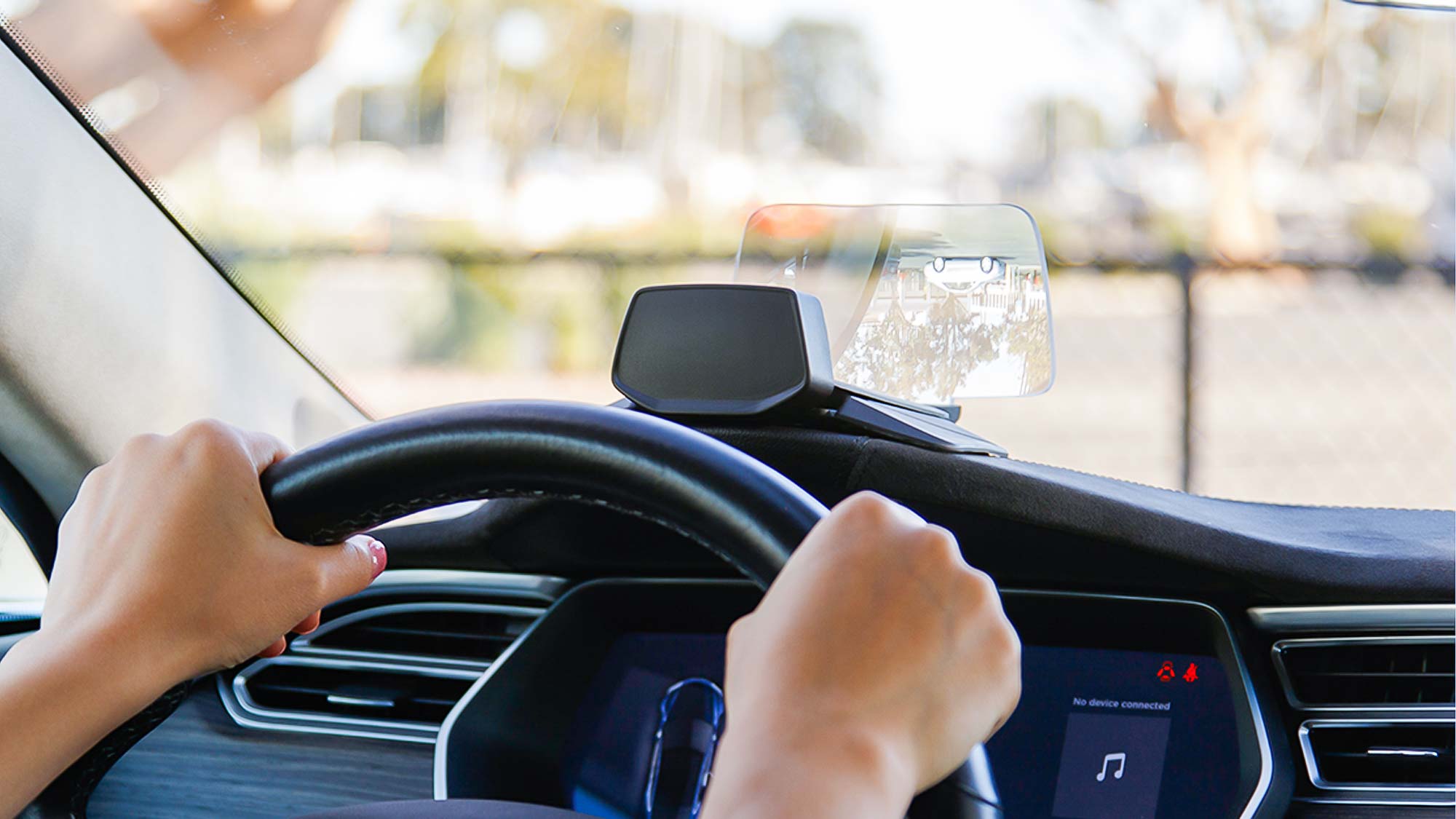
The best car head-up displays probably aren't the first accessories you'll be thinking about when you're kitting up your car. But believe me, once you get used to having that information at a glance, you'll never want to go back. They do seem frivolous, but they're also incredibly useful — at the very least because it stops you taking your eyes off the road ahead.
There are a lot of car head-up displays you can buy right now, but it's quite difficult to tell which ones are actually worth buying. Fortunately for you we've tested a bunch of different head-up displays, and know exactly what to look for. Filtering out the vaporware and finding head-up displays that are actually worth spending your money on.
Whether you're after something that links to your phone, your car's computer or maybe even both, we've picks out some of the best car head-up displays you can buy right now.
The best car head-up displays you can buy
Why you can trust Tom's Guide
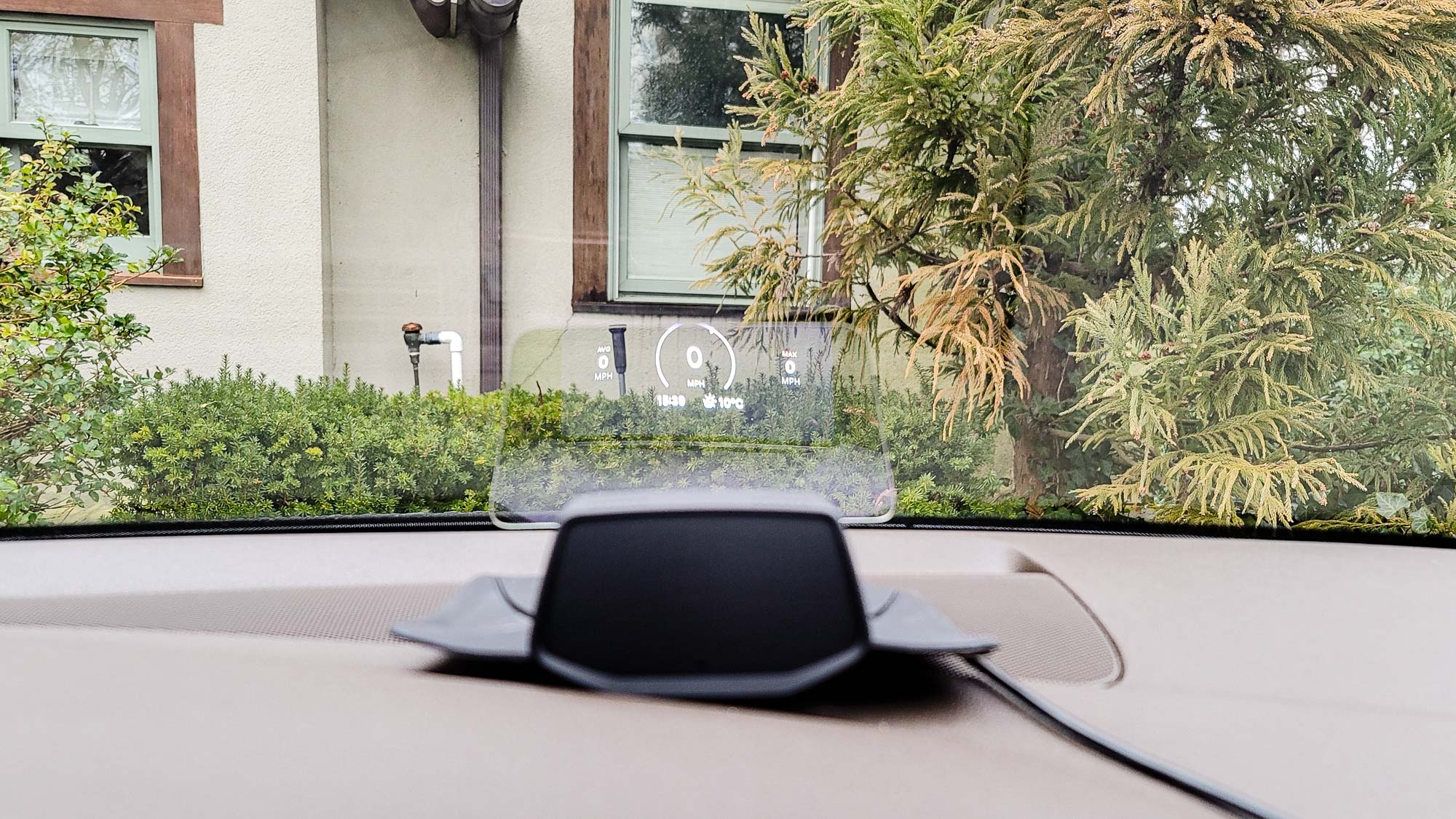
Specifications
Reasons to buy
Reasons to avoid
The Hudway Drive has just about everything you could want from a car head-up display. It manages to combine data from the car’s OBD port, GPS satellites and your own smartphone. The only thing it doesn’t do is add Android Auto or Apple CarPlay to your car, but that might be asking a little much.
At $279 it is one of the most expensive HUDs on the market. But the amount of information it can put in your face means it’s well worth it. Whether that’s driving speed, engine RPMs, or turn-by-turn directions. Just be aware that the unit itself is rather big, and the fold-down screen might get in the way of your view of the road at times.
Read our full Hudway Drive review
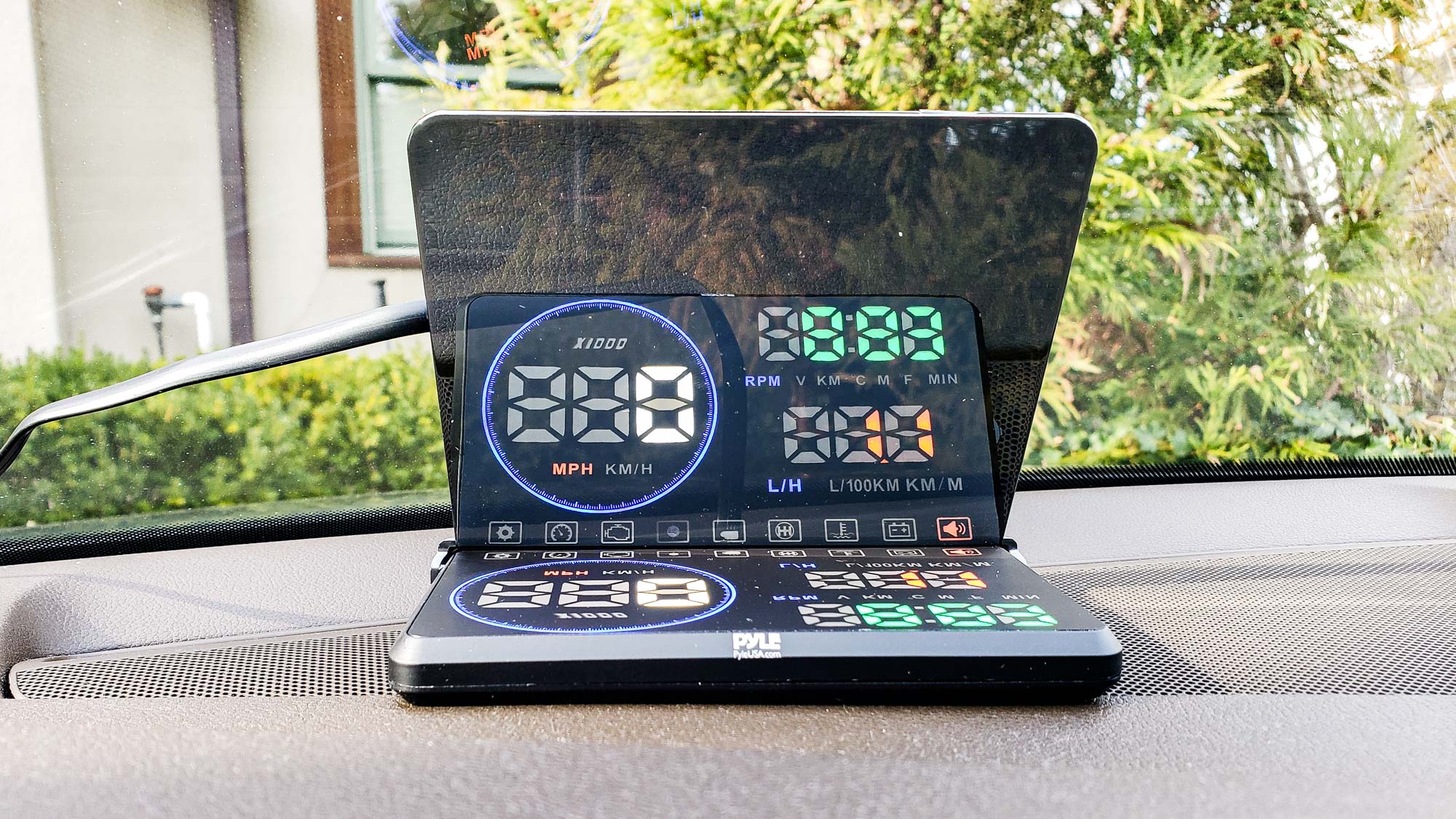
Specifications
Reasons to buy
Reasons to avoid
The Pyle PHUD180BD is able to squeeze an impressive amount of information onto its 5.5-inch screen, but even more impressive is how much it can manage with a $67 price tag. Not the cheapest car head-up display by any stretch, it’s still a brilliant bargain - especially since it can combine OBD and GPS data.
Complete with a display that is as bright as it is large, and the ability to show more than two dozen pieces of automotive information, this is one of the best car head-up displays money can buy. It may get in the way at certain points, and it lacks phone integration, but for $67 you have to make some compromises.
Read our full Pyle PHUD180OBD review
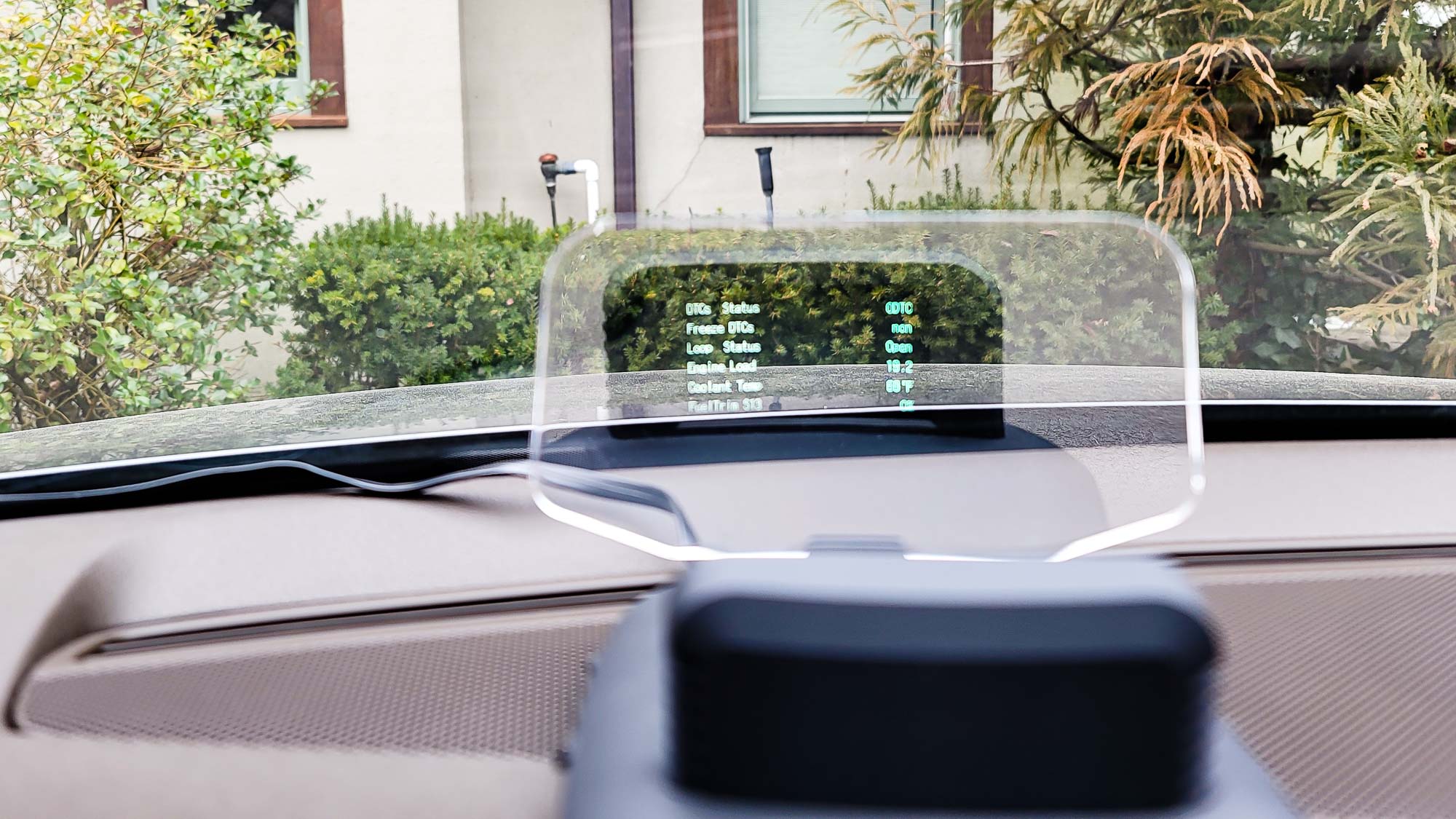
Specifications
Reasons to buy
Reasons to avoid
Another unit that combines GPS and OBD data, the Wiiyoo C1 is a car head-up display that manages to display loads of data in a visually-appealing format. Though this HUD is designed for people who want more than their dashboard has to offer, with support for data that real gear-heads will get a kick out of. If you ever wanted to know air-to-fuel ratios or turbocharger pressures while you’re driving, this might be the HUD for you.
Sadly there’s no phone integration, and no navigation features to go with it. But you get a HUD with a self-contained projection screen, the ability to scan for and alert you to OBD fault codes, and an absolute smorgasbord of information. Plus, it costs just $56.
Read our full Wiiyii C1 OBD + GPS review
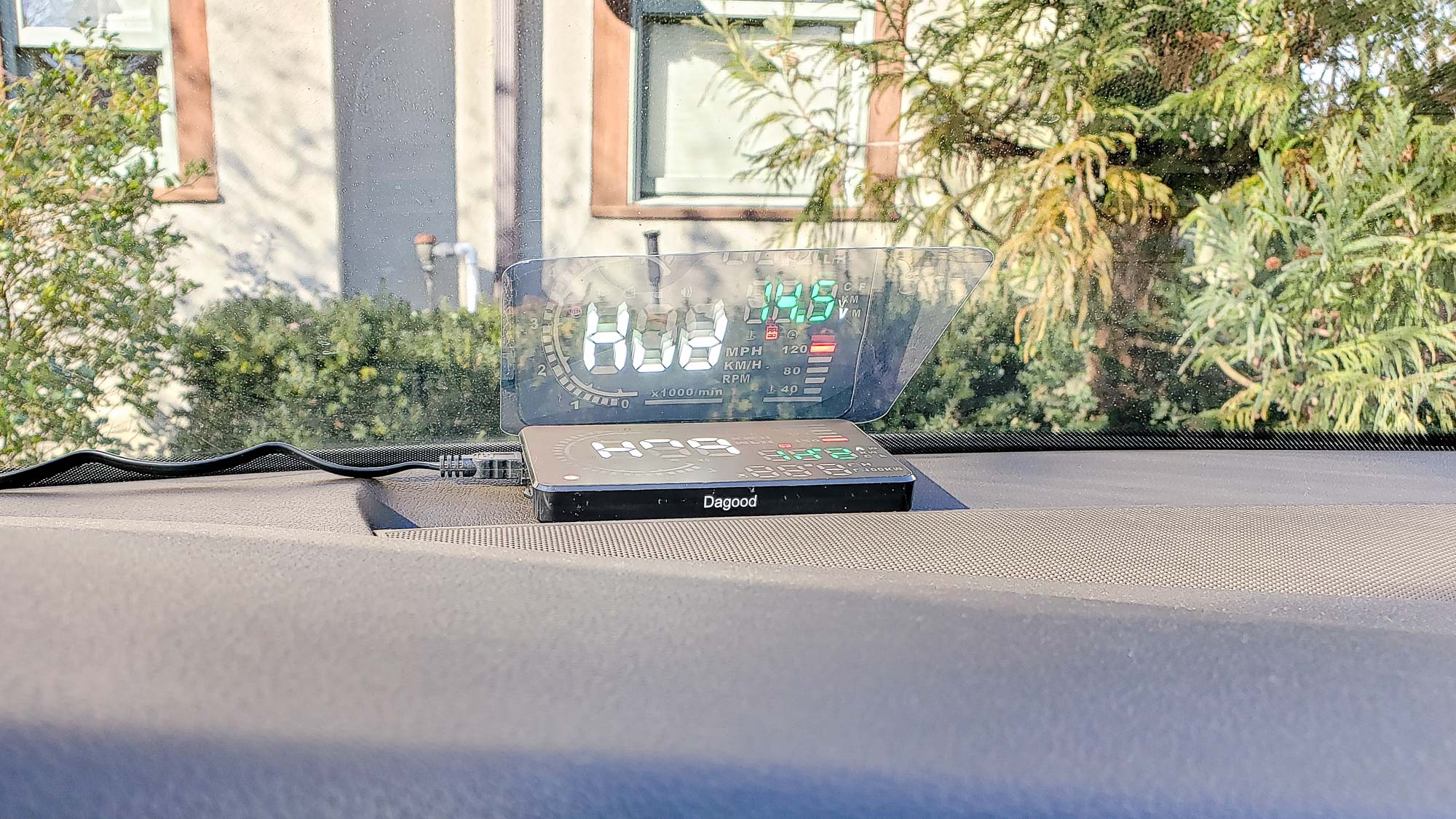
Specifications
Reasons to buy
Reasons to avoid
Another car head-up display that pairs the OBD port with GPS satellites, the Akabane A500 can actually do a lot of things other HUDs can not. Not only is it able to show off a bunch of different pieces of information on its screen, performance enthusiasts will be happy to know it has the ability to test braking and acceleration as well. Can that Tesla of yours really hit 0-60 in the advertised times? The Akabane A500 can help you find out, though we don’t recommend testing this on a public road.
The menu settings can be a little confusing, and the 3.5-inch screen isn’t enormous. Still it can show off a lot of useful information mid-drive, and the OBD connectivity means it can detect when faults occur somewhere in the depths of your car. The inexpensive price tag is just an extra bonus.
Read our full Akabane A500 review
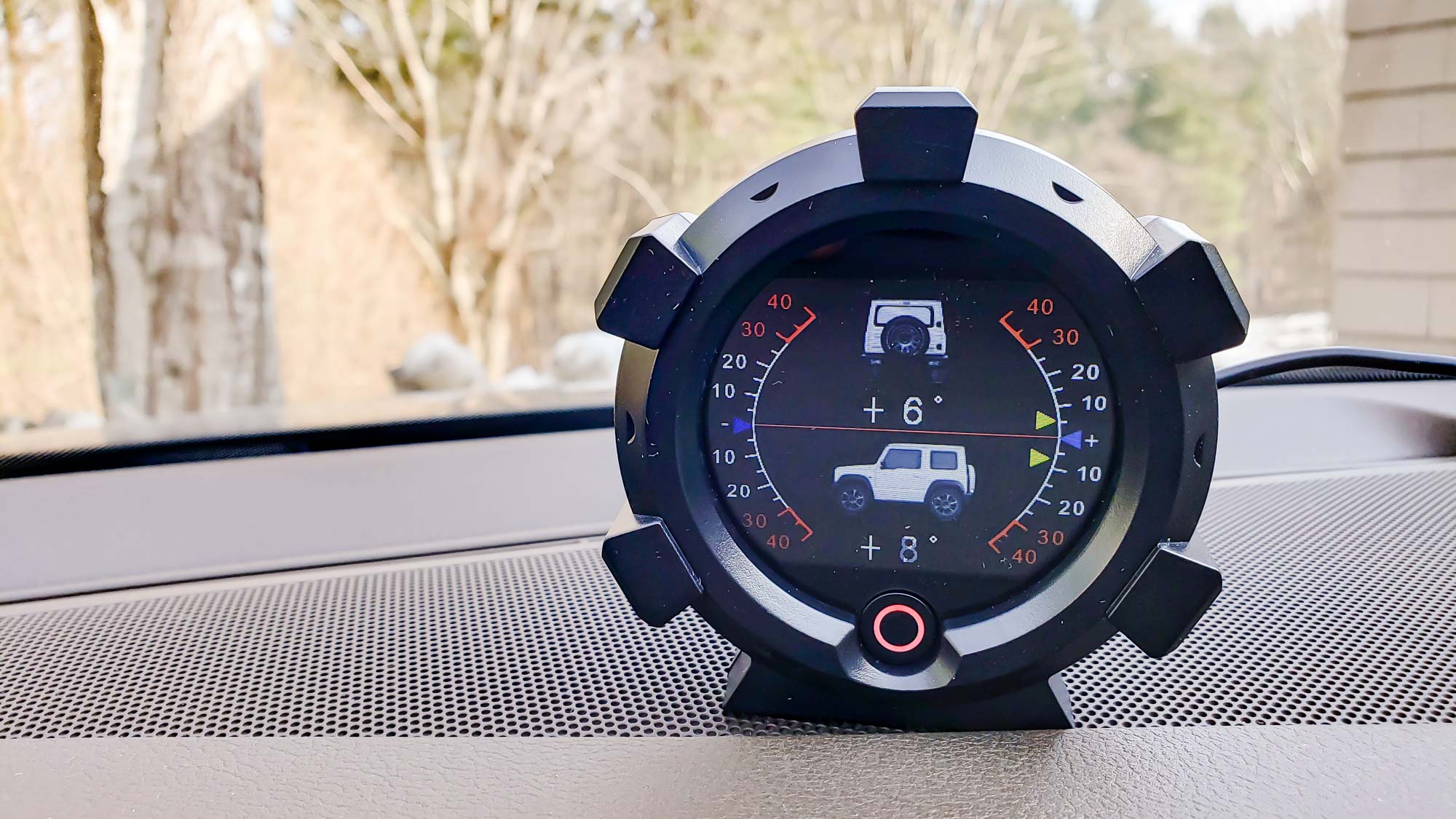
Specifications
Reasons to buy
Reasons to avoid
If you’re more of an off-roading type, the Autool X95 GPS Slope Meter is a car head-up display to take into consideration. Using a combination of GPS and its own internal sensors, it can show a lot of the usual information alongside a few specialist data points. Tilt and roll sensors can alert you if your car is getting too close to the point of no return.
While it can’t access OBD data, meaning it lacks a lot of the information other HUDs rely on. That might be enough to turn some people off, especially if you prefer driving on paved highways. Still with a small, light design and a simple to navigate interface, it would be an ideal purchase for certain types of drivers.
Read our full Autool X95 GPS Slope Meter review
What to look for in a car head-up display
The best head-up displays present the driver’s choice of the car’s operational parameters in a format that’s easy to see, read and digest at a glance. The advantage to a standalone model is they can often out-perform many of the built-in HUDs available on modern cars with the range of data they can show. On the downside, they can’t integrate into the car’s entertainment or navigation systems.
Not all car head-up displays are built equally, however. Not only do they come in all shapes and sizes, there can be a huge range in what information is actually displayed. Some HUDs only repeat what the dashboard shows with items like speed and time, but others go a big step further to offer things like a tachometer and fuel economy.
Many take a bigger leap to show a multitude of items not generally considered pertinent to safe driving, but could still be interesting, nonetheless. These range from turbocharger’s boost pressure to altitude. For the off-roaders among us, some HUD units can even warn the driver when the vehicle is about to tip over.
The rarest options can connect to your smartphone, displaying turn-by-turn navigation, contact information or even text messages. At the very top-end of this spectrum are HUDs that offer Android Auto or Apple CarPlay support, should your car’s not have a compatible infotainment system.
While designs and capabilities vary, the most important part remains its ability to show the data you want to see without taking your eyes off the road. In this regard, size can be a double-edged sword: a big screen can help with large numerals and graphic elements but also can get in the way. For smaller devices, the effect is minimal but it might be harder to read the screen.
Different HUDs offer different screen-types too, either directly showing the data or projecting it onto a reflective screen. The former are generally bigger, but since projections grow over distance the latter can offer a virtual image that can be as large as 10-inches. However projections can be hard to see in bright conditions.
The best projector-based HUDs show that information on a fold-down screen, which offers a clearer picture that beaming it onto your windshield. This also allows the screen to be pushed down when not in use, and clear up your view of the road ahead.
Regardless of which kind of HUD you choose, however, color is also a big help — helping the designer squeeze a lot more information into a small space. Likewise button layout is more important that you might think, with a single-button interface proving awkward to change items and delve into a device’s layered menu structure.
Finally you need to figure out where the HUD is going to get its data and power. Some HUDs utilize your car’s OBD port, which gives them a window into the inner workings of your car — albeit not as much as a dedicated OBD-II scanner might. Meanwhile GPS offers tidbits like drive distance and altitude. However GPS-only devices will need to plug into an alternate power source like your car’s cigarette lighter.
If you’re worried about installing an HUD, don’t be. The current generation of HUDs take minutes to set-up, at most, and the hardest part is often stashing the cable in the gaps in the dashboard. Here, a seemingly small item, like having a flat cable instead of a round one can make it easier to hide. It’s something anyone can do, and the units themselves typically sit on the dashboard using a pad or an adhesive strip for support.
How much do the best head-up displays cost?
There are head-up displays that start at under $20 but these are generally pretty poor quality. They either have monochrome screens or only display one item at a time, like the car’s speed.
Stepping up to between $30 and $70, and you're able to pick up a large range of head-up displays with plenty of functionality. The most expensive head-up displays can cost in excess of $250, but these pricey units aren't that common.
That said you're paying for a display that can do just about anything, with stylish designs and the ability to pull data from multiple sources at once — including your phone and the car's OBD port.
How we test car head-up displays
The bulk of our head-up display testing is done on the road, but there's still plenty of work that needs doing in the garage first. Like all in-car accessories the most important thing is the setup and positioning. First of all ensuring that the display is installed in a position that's both useful and out of the way. The last thing you need is a HUD that blocks a portion of the driver's view.
The next step is the most intimidating, and that's concealing all the wires. In my experience it's a lot easier than rookies might think, but it is still important to ensure that the wires are both long and secure enough to reach the power supply. Usually there is ample wiring, but how much depends on the device in question.
From there I can start putting each head-up display through its paces, beginning with a startup test. This involves switching on the engine, and timing how long it takes for each display to boot up and display data. Then I do the opposite, timing how long it takes for each device to shut down after the engine is switched off.
Then it's time to see how the data is presented, in terms of sharpness and interface design. This inevitably leads me to tinker with the interface and its controls, running through different options and settings — making notes of efficiency and ease of use in the process. This ends with going through each of the settings, counting each display's options.
It's at this point I get to hit the open road, and take each head-up display for test drives. This phase of testing is all about assessing how useful each screen is when you're driving, and what issues actually arise during real world use. This includes testing how well the display fairs in different lighting conditions, alongside speed-up and slow-down maneuvers to gauge how easily each HUD can keep up with changes.
The last thing we focus on are the specialist features, and how those operate during a drive. These included using the text display function on some, the inclinometer on others and trying out the turn-by-turn directions where it’s offered.
Sign up to get the BEST of Tom's Guide direct to your inbox.
Get instant access to breaking news, the hottest reviews, great deals and helpful tips.
Brian Nadel is a freelance writer and editor who specializes in technology reporting and reviewing. He works out of the suburban New York City area and has covered topics from nuclear power plants and Wi-Fi routers to cars and tablets. The former editor-in-chief of Mobile Computing and Communications, Nadel is the recipient of the TransPacific Writing Award.

